Rockwool is preferred by many for hydroponic gardening.
Apart from keeping moisture levels in check, rockwool has a great air-to-water ratio that aids in the oxygenation of plant roots, keeping them strong and healthy.
This growing medium is also inert and won’t affect the pH levels of your nutrient solution.
- Related article: Growing Mediums for Hydroponics
We’ll take you through a guide on how to use rockwool in hydroponics, so we can address all your questions.
What Is Rockwool?
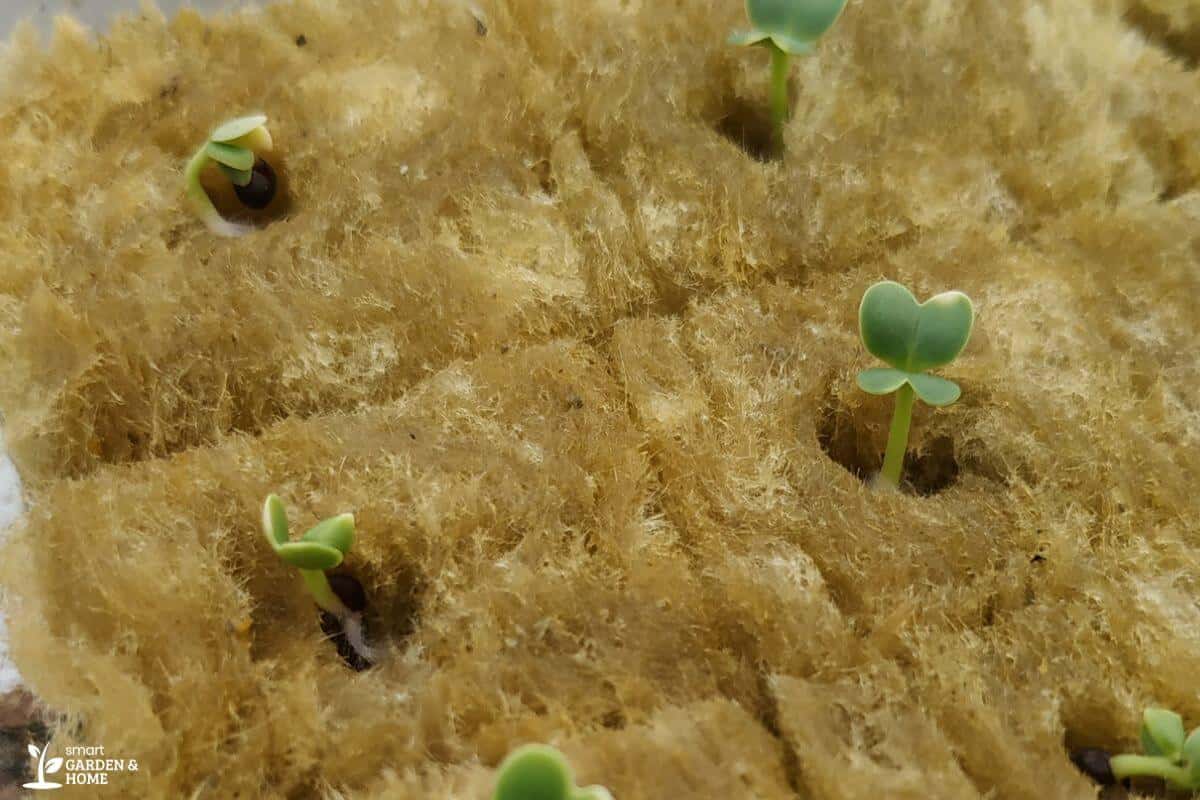
Rockwool or otherwise known as stonewool is a lightweight, rock-based fibrous growing medium composed of basaltic rock, such as granite and limestone and recycled slag.
These fibers are compressed into different cubes and bricks of all sizes.
Benefits of Rockwool as a Growing Medium
Using rockwool as a growing medium has its own advantages such as great aeration and water retention properties.
1. Retains Water
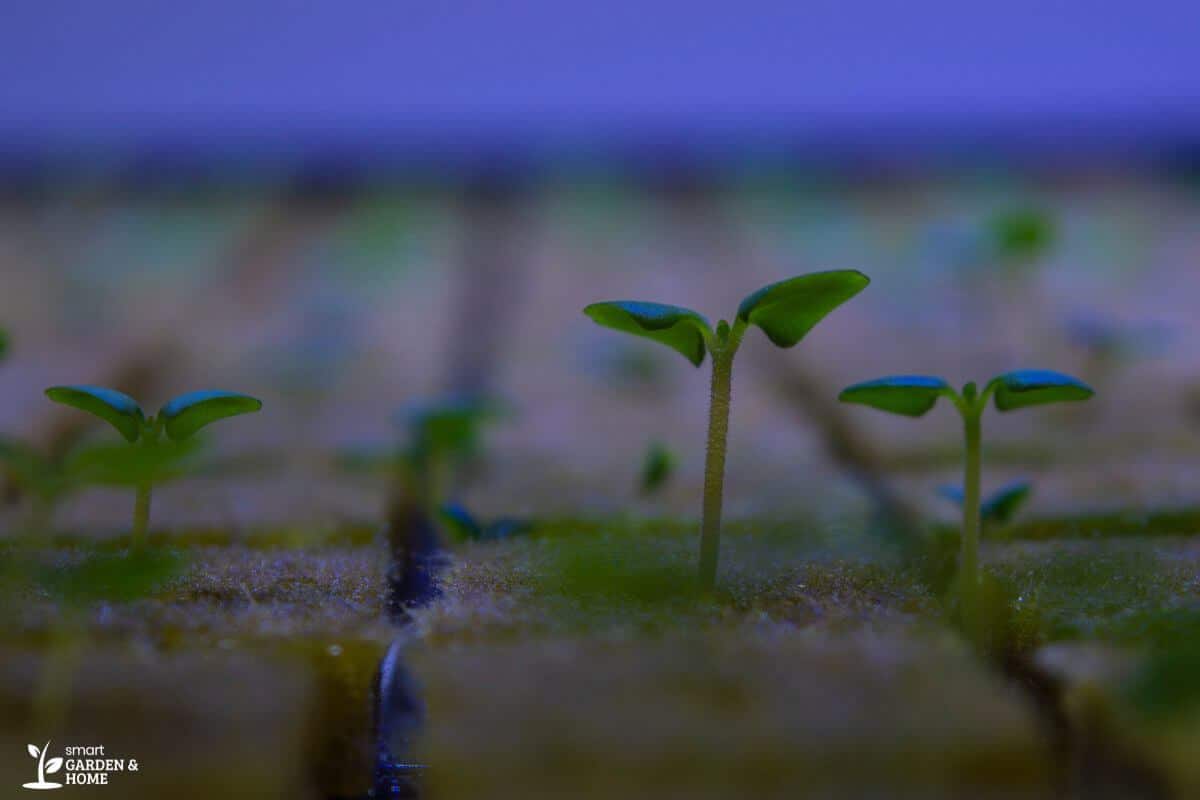
The water retention of rockwool is excellent. One of the advantages of using rockwool as a growing medium is that it absorbs water like a sponge.
The growing medium absorbs water from the bottom and allows for sufficient airflow through the top.
It’s beneficial to use for hydroponic plants that require a lot of water. As this growing medium will retain moisture and keep the roots of your plants wet.
Rockwool is best suited for wicking hydroponic systems, although it can be used in other hydroponic methods as well.
2. Aeration
Aeration in a hydroponic garden is key to success. Rockwool fibers not only have great water retention but provides a better airflow due to their extremely high oxygen retention.
The porous nature of the growing medium will allow oxygen to seep right through.
3. Great for Seedlings
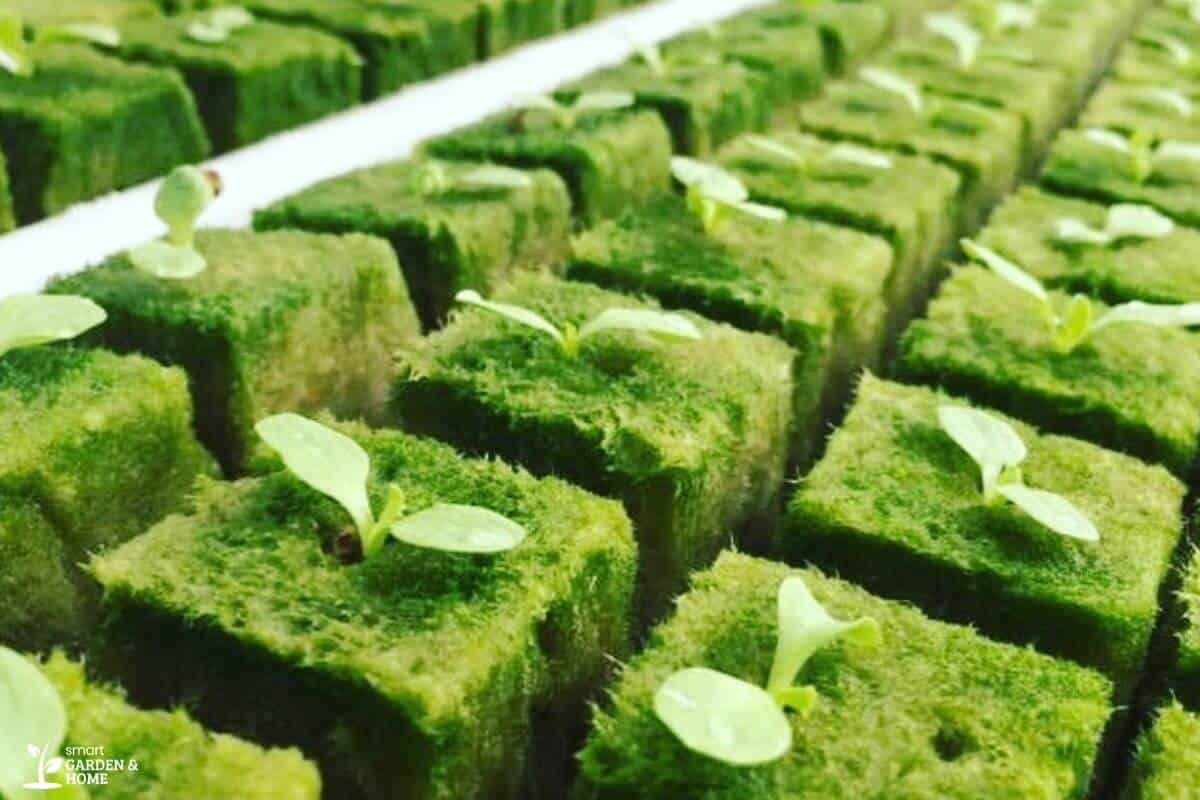
Most hydroponic growers will tend to use jiffy plus when germinating seeds. There’s no need to use any other growing medium when rockwool does it all.
Rockwool is a great growing medium for seed germination. Seeds germinate faster in rockwool than in soil. You can also rely on this medium for holding your plants steady and not breaking down over a period of time.
4. Rockwool Is Sterile
Rockwool is a sterile growing medium. It’s safe to use, and will not introduce any ammonia, unlike other hydroponic growing mediums.
5. Different Sizes
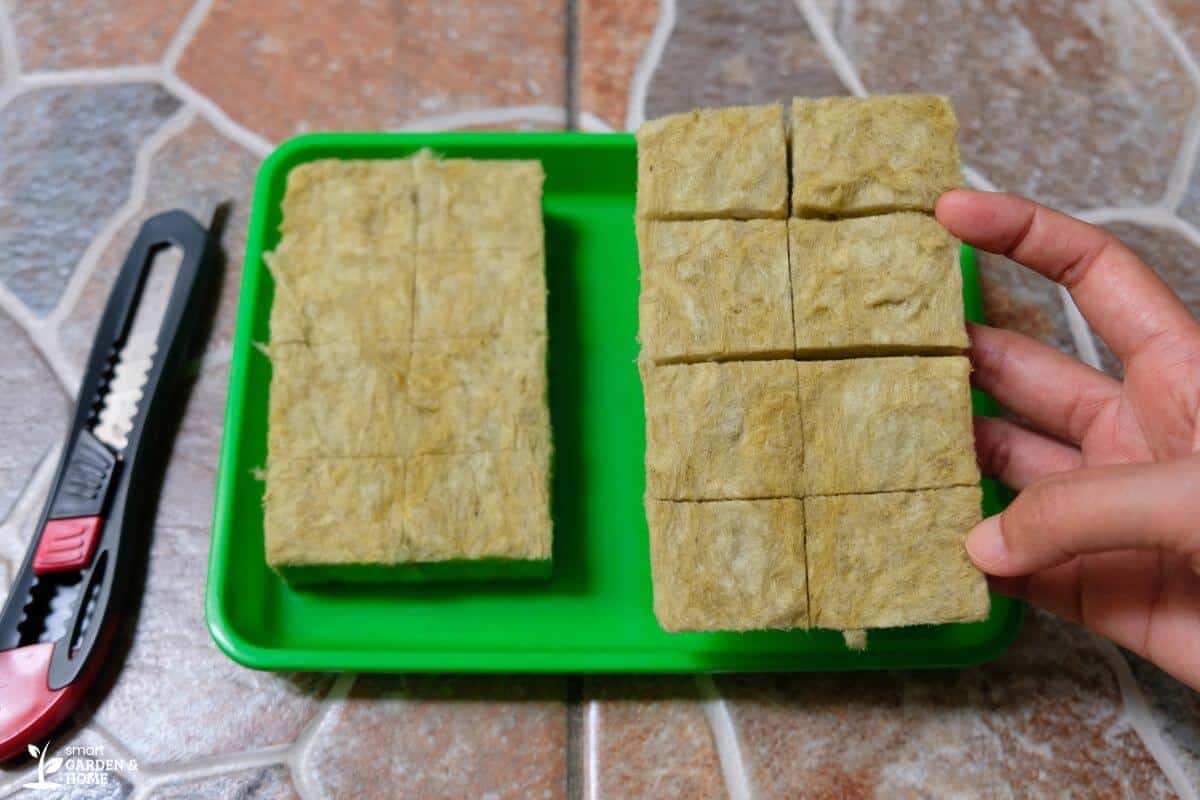
Rockwool can easily be cut into any shape or size that you want it to take. Being very lightweight, this substrate is easy to handle and transport.
It’s also affordable and won’t break your bank as you can generally purchase rockwool in large quantities, cut what is needed, and store the rest away.
For larger farms or more industrial use, rockwool can be purchased in extra-large cubes. These cubes are generally available in sizes ranging from three to four inches to over 4 inches.
This is dependent on where you purchase your rockwool and the availability of the supplier.
Disadvantages of Rockwool as a Growing Medium
As wonderful as rockwool is as a growing medium, there are some disadvantages to using it as a growing medium. We’ll list several disadvantages of using this hydroponic substrate.
1. Dust Particles Are Hazardous
Rockwool material is similar to asbestos.
They are both made from rock material, whose fibers have been proven to be hazardous. Unlike using asbestos, you are required to wear a dust mask when handling rockwool material.
The fibers from rockwool are hazardous to one’s health if ingested so it’s always best to be cautious.
2. High PH and Nutrients Level
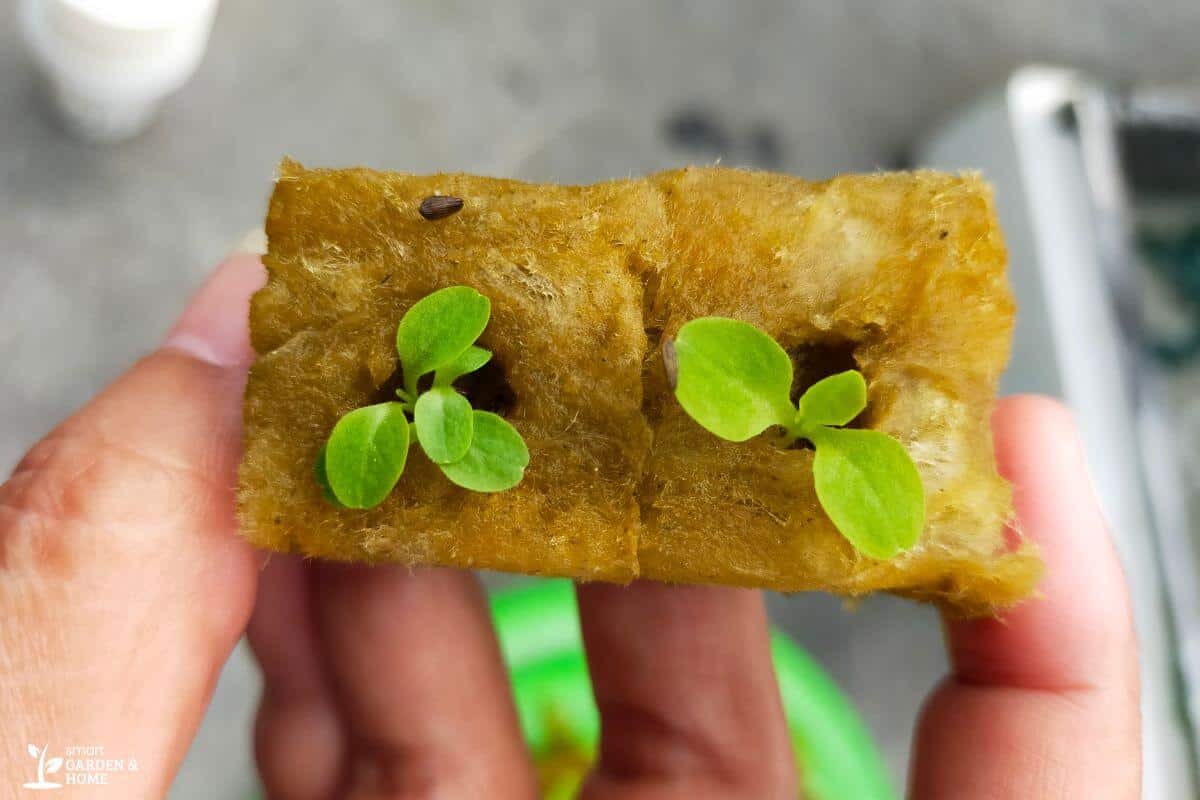
Rockwool is formed from natural substances, it has a very high pH and nutrient balance that must be altered before adding nutrients to your hydroponic nutrient solution.
3. Non-degradable
Rockwool creates unwanted non-degradable waste material for landfills as it is not made of natural material.
This is a big downside for this medium. As much as it is reusable and non-degradable, you need to dispose of it properly when you no longer have a use for it.
Tips for Using Rockwool in Hydroponics
Before using a granulated rockwool in your system, it is important to keep these things in check:
1. Soak Before Use
Rinsing and soaking your growing mediums prior to growing is generally the case. Rockwool is naturally a dry material and will first need to be soaked in hot water for 24 hours or steamed before you can use it as a growing medium.
Always try to keep your rockwool as wet as possible. Rockwool will become very hard if left to dry for extended periods of time.
2. Soak in a Nutrient Solution
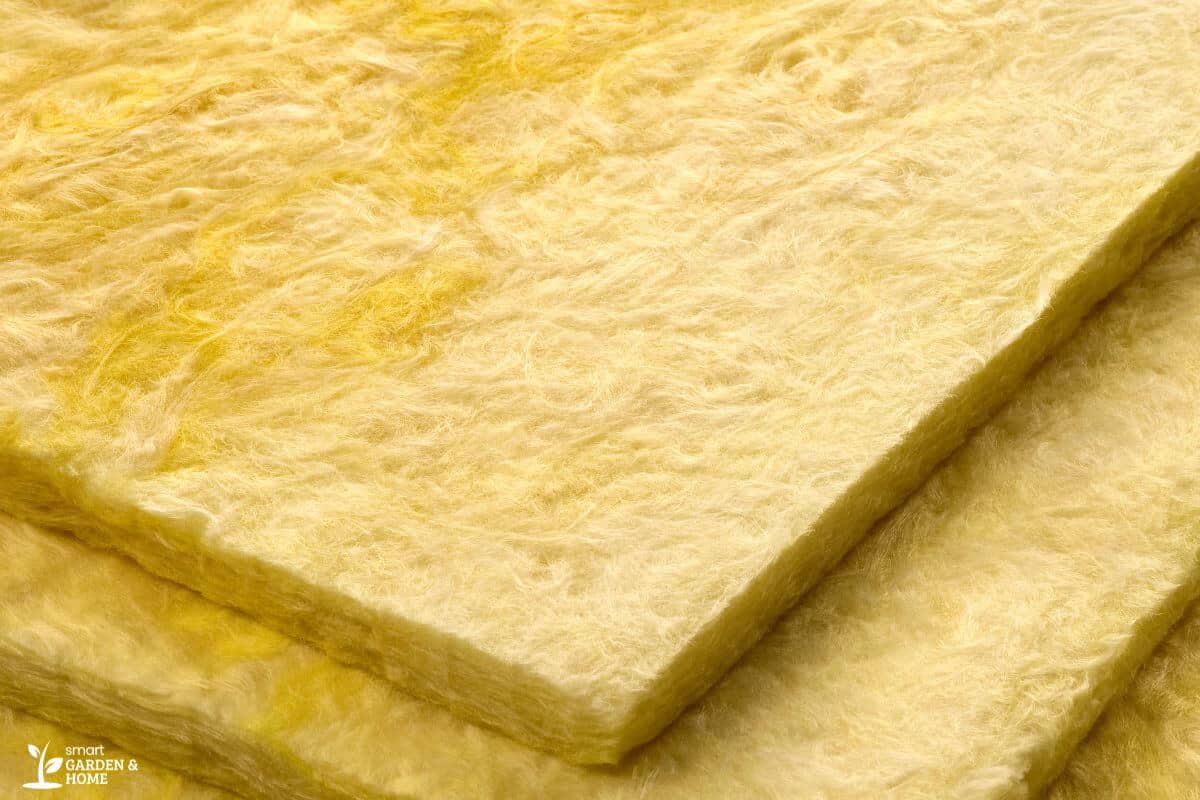
After you have soaked granulated rockwool for 24 hours in hot water, it’s best to add nutrients to the growing medium.
Once your rockwool has been soaked in feed solution, it will ensure the plants have all the nutrients they need to begin their cycle.
3. Don’t Overwater Your Plants in Rockwool
For plants in a hydroponic system that uses rockwool, you should do short but frequent nutrient solution applications. It should be enough for the cube rockwool to reach field capacity until the next irrigation.
Field capacity means that the growing medium used is already fully drained but still has a good amount of moisture left until the next feeding time.
A standard rockwool will typically contain the following after draining from irrigation:
- 80% nutrient solution
- 15% air pore space
- 5% rockwool fibers
4. Don’t Squeeze the Rockwool
It is a common misconception that you should squeeze the remaining water from your cube rockwool.
This is not necessary as rockwool has beneficial water retention and aeration properties, that allow the development of roots.
Crushing the rockwool damages the structures, and air pockets. This will never be restored and turn the material into a soggy and wet mess.
Final Thoughts on Rockwool and Hydroponics
Rockwool is an excellent growing medium for a hydroponic system because is is lightweight, easy to use, and pocket-friendly.
Not only does it serve as a stable structure to support plant growth but it also has great moisture retention and aeration properties.
Proper handling of this substrate includes setting up a correct irrigation schedule to avoid too much water retention, and not squeezing the material.
Following these simple tips will ensure that your hydroponic green space runs smoothly and produces healthy and happy plants.
Is hydroponics something that you want to learn more about? If yes, then we have these other awesome articles for you to read:
- How to Use Clay Pebbles in Hydroponics
- Hydroponics Vermiculite
- How to Use Pumice for Hydroponics
- Using Sand With Hydroponics
- Coco Coir vs Peat
Sources:


